Unit 1
1/135
There's no tags or description
Looks like no tags are added yet.
Name | Mastery | Learn | Test | Matching | Spaced |
|---|
No study sessions yet.
136 Terms
Cognitive Psychology
The branch of psychology that is concerned with how people acquire, store, transform, use, and communicate information
Cognitive psychology is the study of ___________________________ by which humans learn about and interact with the world
mental processes
Subtopics of cognitive psychology
perception, attention, memory, language, problem-solving, and planning
empiricism
nurture
nativism
nature
Environment/experiences side
Aristotle and Locke
Biology side
Descartes and Plato
Gestalt psychology
the whole is greater than the sum of its parts
Pavlov
classical conditioning
Thorndike
operant conditioning
engineering
ideas of humans as information processors
thinking as computation
development of computers made concept of thinking-as-computation more plausible
artificial intelligence
computers’ ability to do “smart” things (chess)
cognitive science is the intersection of several disciplines including
psychology, linguistics, philosophy, and computer science
neuroscience aims to
integrate cognitive science, neuroimaging, neuropsychology
cognitive psychology today increasingly places emphasis on
formal models, neuroscience, find-grained measures, and statistical analyses
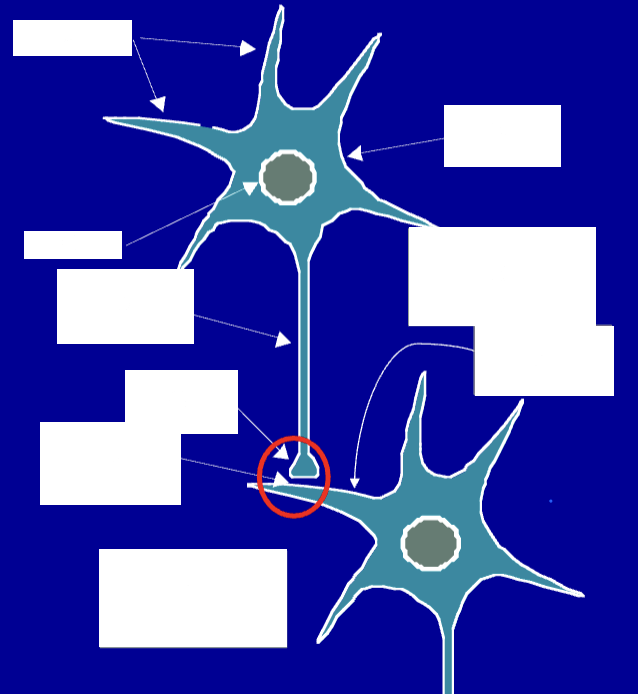
what is A
dendrites
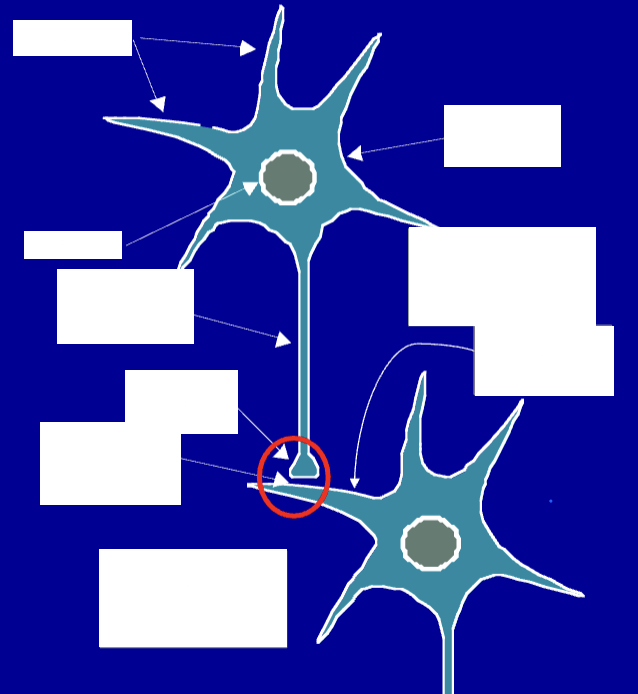
what is B
soma
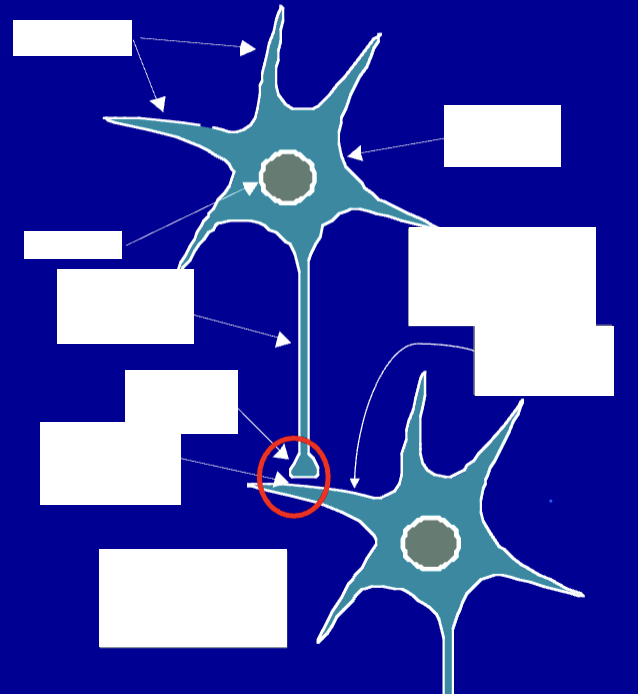
what is C
nucleus
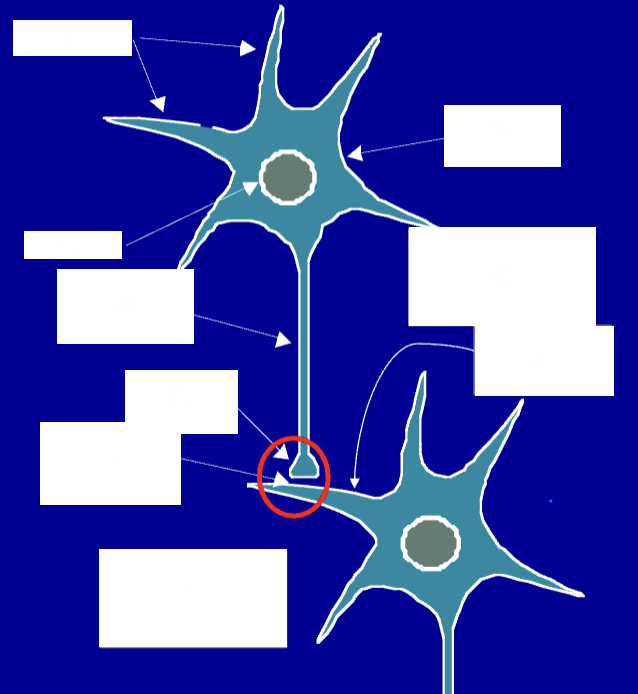
what is D
axon
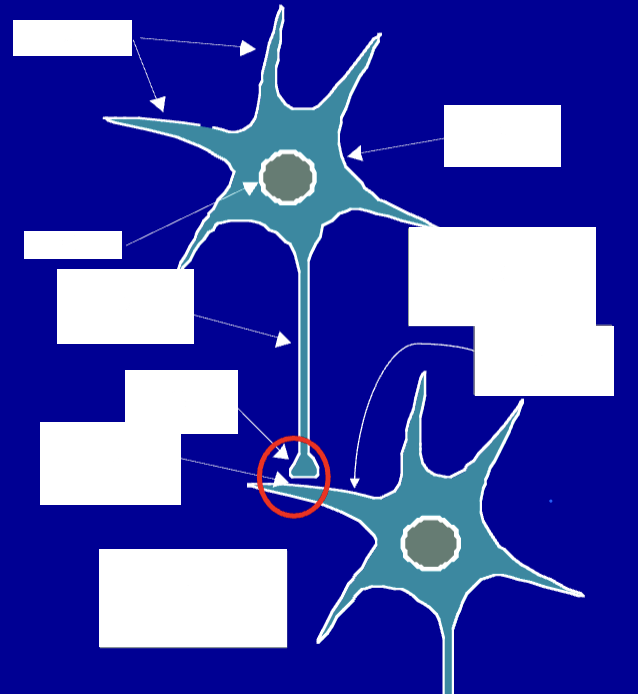
what is E
presynaptic cell
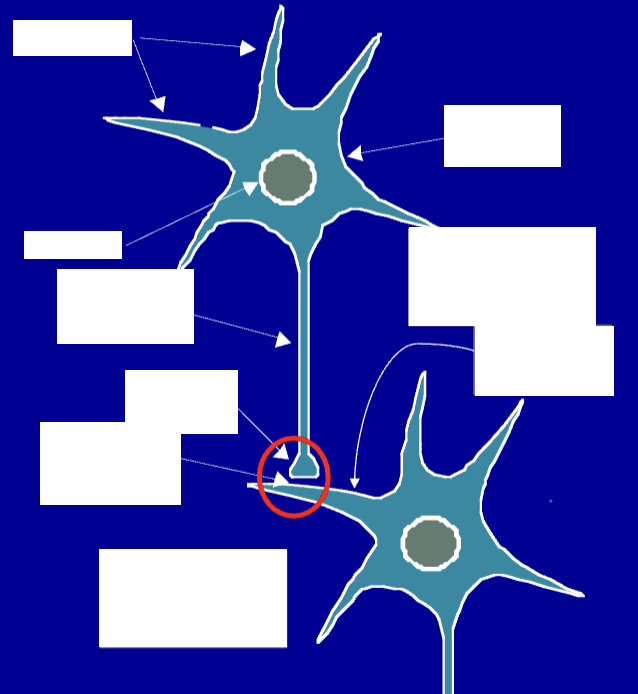
what is F
dendrite
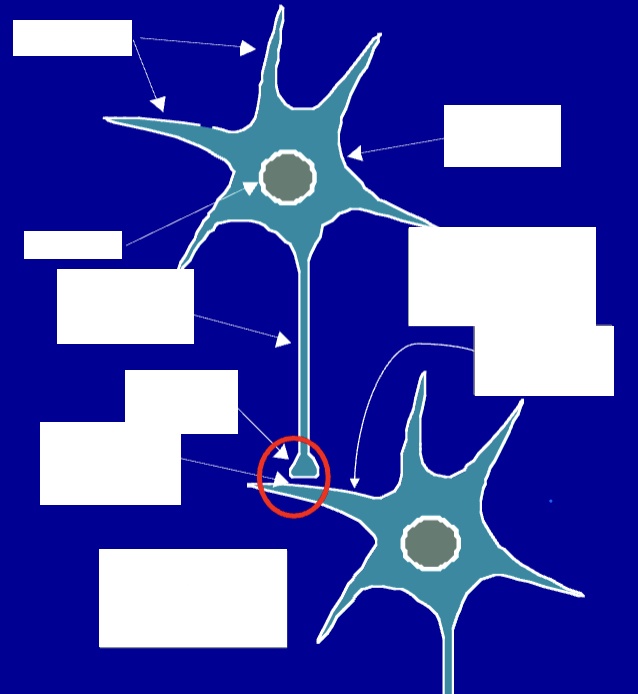
what is G
axon terminal
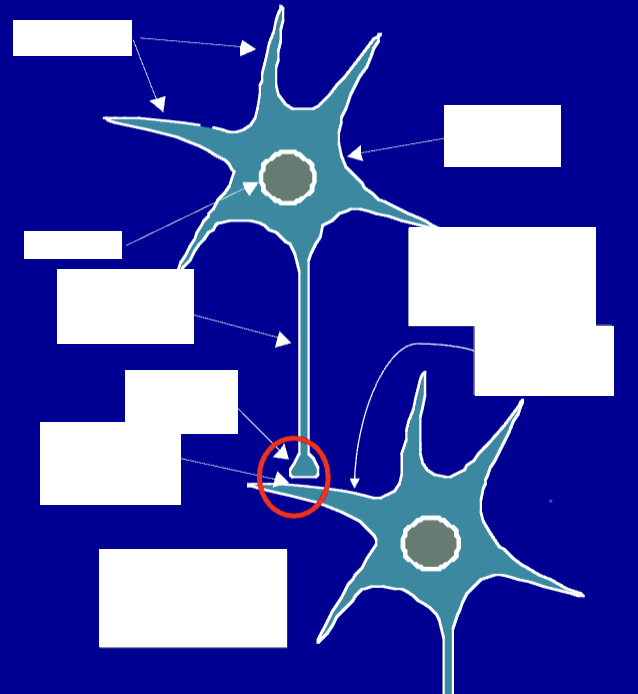
what is H
synapse
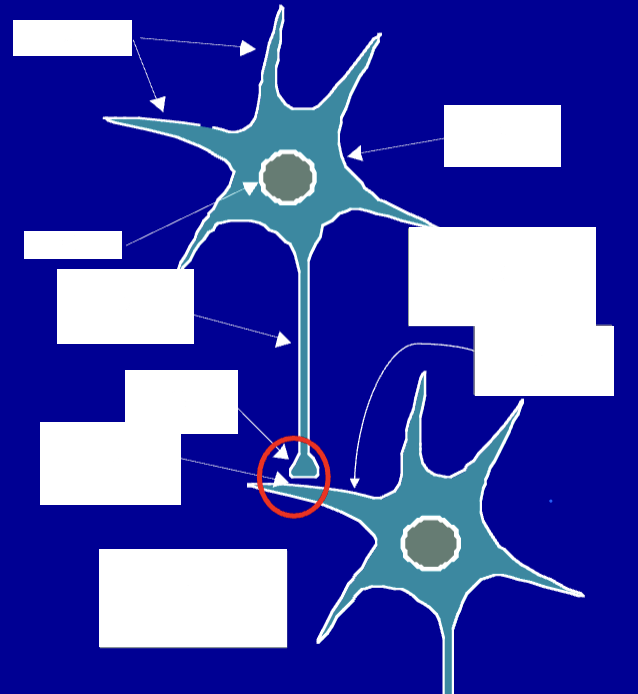
what is I
postsynaptic cell
information transmission
presynaptic action potential
neurotransmitter release
neurotransmitter binding
ion flow
postsynaptic potential
excitatory postsynaptic potential may - action potential (spike)
inhibitory postsynaptic potential may - prevent spike
changing information flow
change synaptic strengths
consequences of changing information flow
postsynaptic action potential is more likely and long term change in response
methods for linking brain and cognition
brain imaging, neuropsychology, and brain imaging
process flow of information processing
External World → Stimulus → Response
Single-cell recording enables understanding the response properties of
One or a relatively small number of neurons at a time
patterns of EEG are triggered by a
stimulus
single-unit recording
insight into inner workings, individual neurons’ responses
ERP
aggregated data, equivalent to crowd noise within a stadium
Kissler et al. (2007)
study on emotional word responses
Higher emotional words trigger greater responses 200-300 mc in left occipital areas
increased brain activity correlates with
higher oxygen utilization in blood
greater changes in blood oxygen content
fMRI
detects magnetic properties of blood
good spacial resolution, poor temporal resolution
fNIRS
tracks optical properties of blood
similar to ERP in pros and cons
fMRI and fNIRS enable imaging of
blood oxygen changes in the brain
neuropsychology
study of cognitive processing in patients with brain injuries or deteriorations
conditions leading to brain damage
blood flow reduction
cerebrovascular disorders/strokes
head injuries
tumors
infections
degenerative disorders
Broca’s aphasia
characterized by halting and effortful speech
left fronal damage linked to speech impairment
Wernicke’s aphasia
damage in the temporal lobe affecting comprehension, resulting in fluent yet nonsensical speech
spatial cognition
right parietal lobe injury disrupts visual-spatial tasks
memory
Hippocampal injury alters specific memory types
sensation
the process of receiving external stimuli through sensory receptors
perception
the cognition process of interpreting what is sensed, allowing us to understand our environment. this process builds upon the sensory input and elaborates it into a comprehensive interpretation
constructivist view
Proposes that perception is constructed through cognitive processes, emphasizing the role of mental interpretation and context.
ecological view
Suggests that perception is inherently linked to a rich environmental structure that can be processed directly, with both traditional (direct perception with no mental processing) and modern (involving cognitive complexity) perspectives
light enters through the
cornea
light then passes through the
pupil
the pupil is controlled by the
iris
the light is finally focused by the ______ onto the _________
lens, retina
retina
contains photoreceptors that convert light into neural signals
cones
neural signals for color and detail, primarily located in the fovea
rods
neural signals for sensitivity to light and motion but color-blind, located in the periphery
optic nerve
Transmits visual information from the retina.
thalamus
Acts as a relay station for sensory information before reaching the cortex.
primary visual cortex (V1)
Located in the occipital lobe, responsible for initial visual processing.
secondary cortical areas
Further processing occurs in areas associated with visual perception, with parallel processing pathways
occipital-parietal pathway
where
involved in spatial processing
occipital-temporal pathway
what
involved in object recognition
perceptual grouping
The challenge of organizing visual stimuli into distinct objects involves understanding which elements group together and which do not.
gestalt principles
Provide rules on how objects are perceived together, emphasizing higher-level organizational principles
pragnanz (simplicity)
Visual inputs are interpreted in the simplest way.
similarity
Objects that are similar tend to be grouped together.
parallelism and symmetry
Shapes that are parallel or symmetrical are likely seen as part of the same object.
proximity
Closer objects are seen as forming a group
common fate
Objects moving in the same direction are grouped
figure-ground organization
This involves segregating a visual scene into a foreground (figure) and background (ground).
Factors that influence figure-ground assignment include geometric cues such as size, symmetry, and familiarity.
visual object recognition
a fundamental process whereby sensory input is linked to representations stored in memory
template matching
Proposes that the brain compares incoming sensory information to templates stored in memory, looking for a precise match
structural description theories
Objects are represented abstractly in terms of their parts and the spatial relations among those parts. Recognition involves creating a structural description of the input and comparing it with existing memory representations.
feature analysis/detection theories
Focus on the identification of distinct features within a visual input and the comparison of these features with stored descriptions in memory.
recognition by components
Developed by Irving Biederman, this theory suggests that objects are recognized by the geons (geometric icons) that make them up
view-based theories
These theories assert that object recognition is dependent on specific views or perspectives of an object, with multiple angles stored in memory for comparison
Recognition
forming a structural description and comparing it with memory to identify the possible parts of the object and how they can be recognized.
featural analysis in object recognition
This approach analyzes incoming visual images by breaking them down into features, which are then compared with stored descriptions
recognition-by-components theory
This is a renowned structural description theory that suggests we identify objects based on their components known as geons. Geons are simple geometric shapes that serve as the building blocks of objects.
types of geons
wedges
bricks
cubes
cylinders
cones
viewpoint invariance
Geons remain recognizable from various angles and are sturdy against visual noise
robustness to occlusion
Geons can still be recognized even when partially obscured. For instance, concave regions are critical cues for identifying an object
discriminability
This is associated with nonaccidental properties that remain consistent despite changes in the viewpoint. Examples include specific edges, vertices, and parallel lines that help in object identification.
stages in recognition-by-components theory
detection of non accidental properties
edge extraction
determination of components
parsing at regions of concavity
matching of components to object representations
object identification
view-based theories
While geons are significant, recognition can also be highly viewpoint-dependent. It’s suggested that the brain may store only a few specific views of an object and utilizes mental rotation to comprehend them from different angles
Wilhelm Wundt and structuralism
father of psychology and developer of structuralism
focuses on breaking down mental processes into the basics
Hermann von Ebbinghaus
experimental psychology and memory
Ebbinghaus forgetting curve
William James and functionalism
founder of functionalism
emphasizes mental processes’ purpose in adapting to the environment
Karl Popper and falsifiability
proposed as a criterion to differentiate scientific theories from non-scientific theories
John Watson and radical behaviorism
emphasizes that behavior is determined by environmental stimuli rather than internal thoughts
B.F. Skinner
developed the theory of operant conditioning
behaviorism
Edward C. Tolman
cognitive maps and learning in behaviorism
Noam Chomsky
theories on language and language acquisition device
information processing approach
making human thinking more like computer operations, promoting the flow and transformation of information
computer metaphor
comparing human cognition to computer operations
action potential
neuron sends info down the axon
neurotransmitter
chemicals that transmit signals across synapses
learning at the neural level
changes in neural connections due to experience, enabling memory and skill acquisition
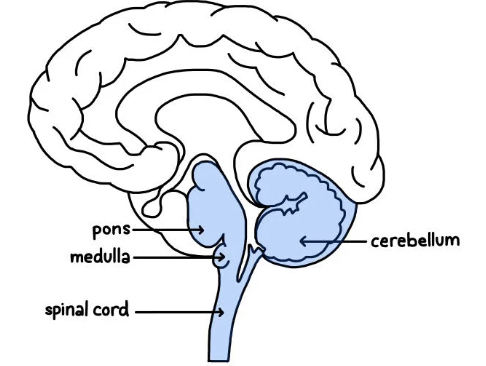
what major division of the brain is the highlighted area
hindbrain
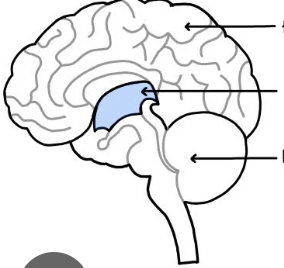
what major division of the brain is the highlighted area
midbrain